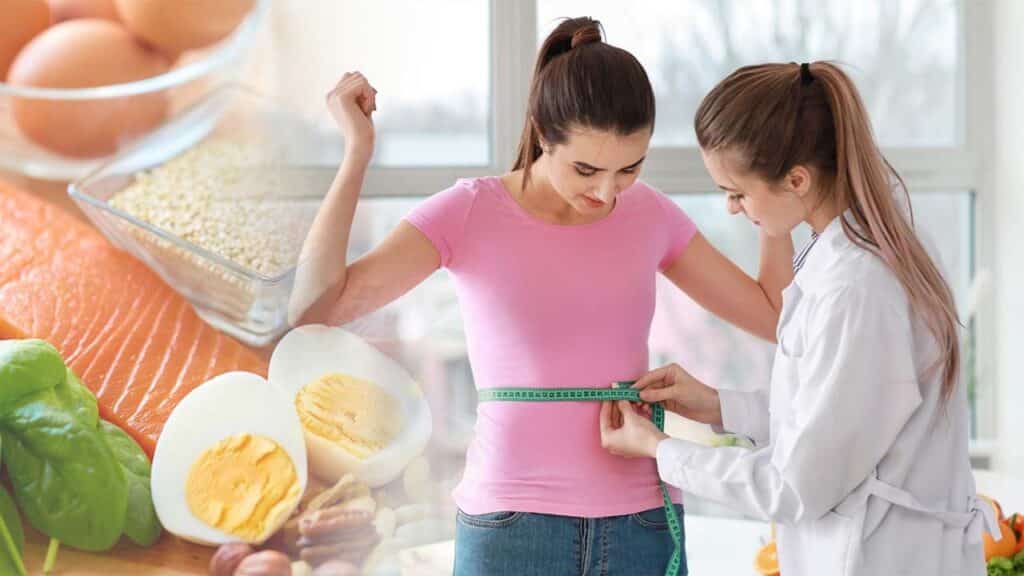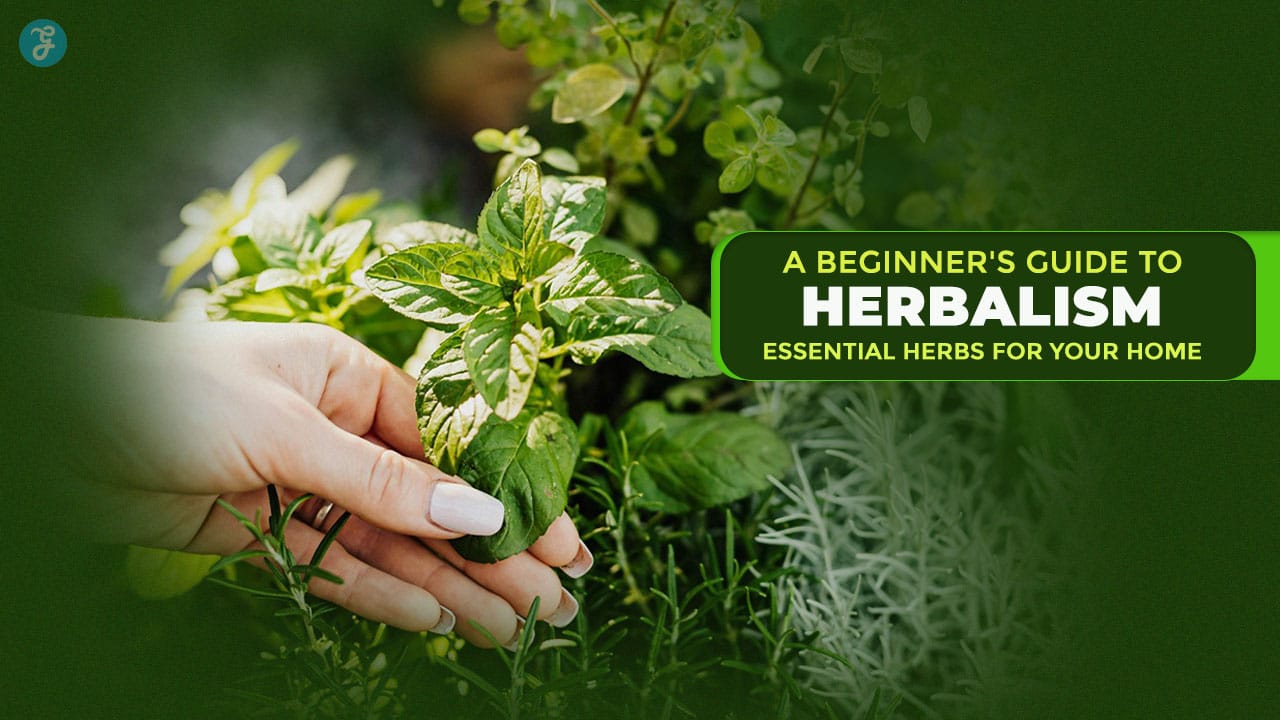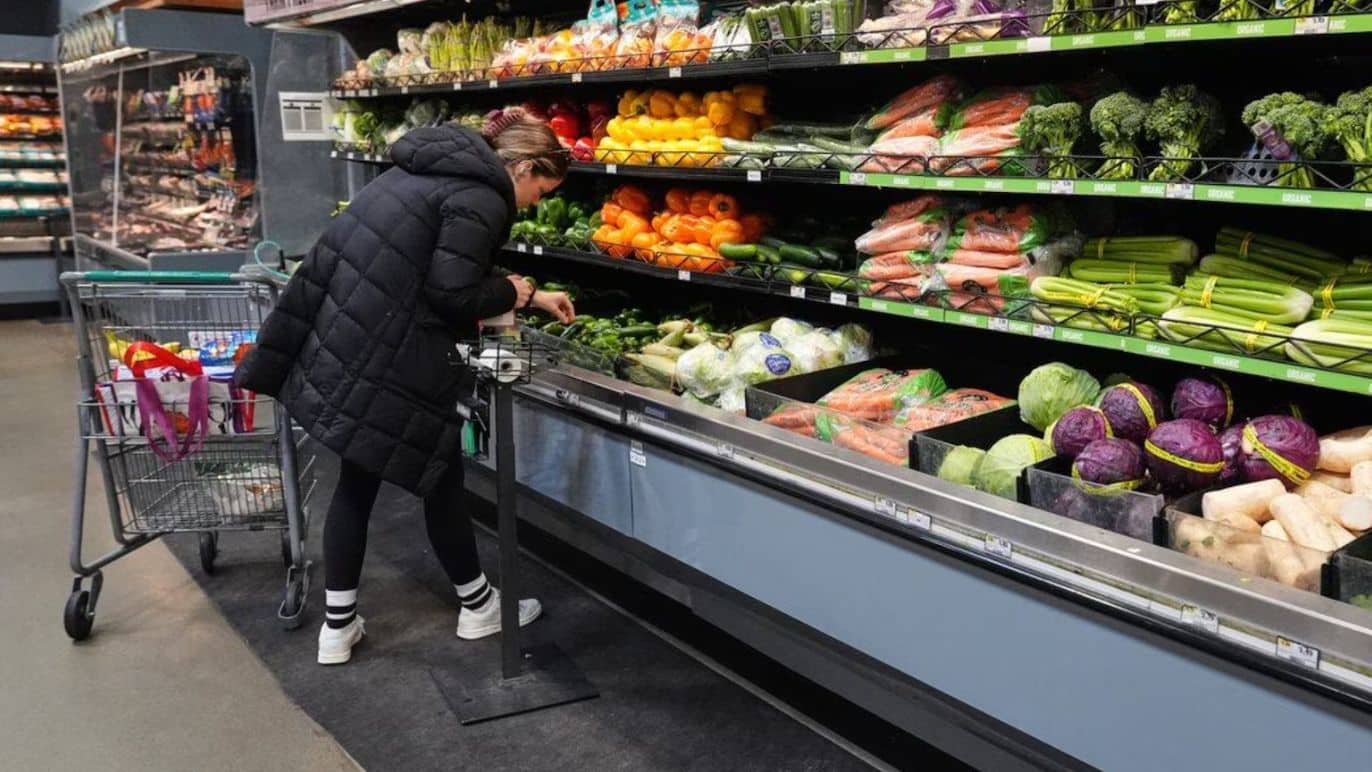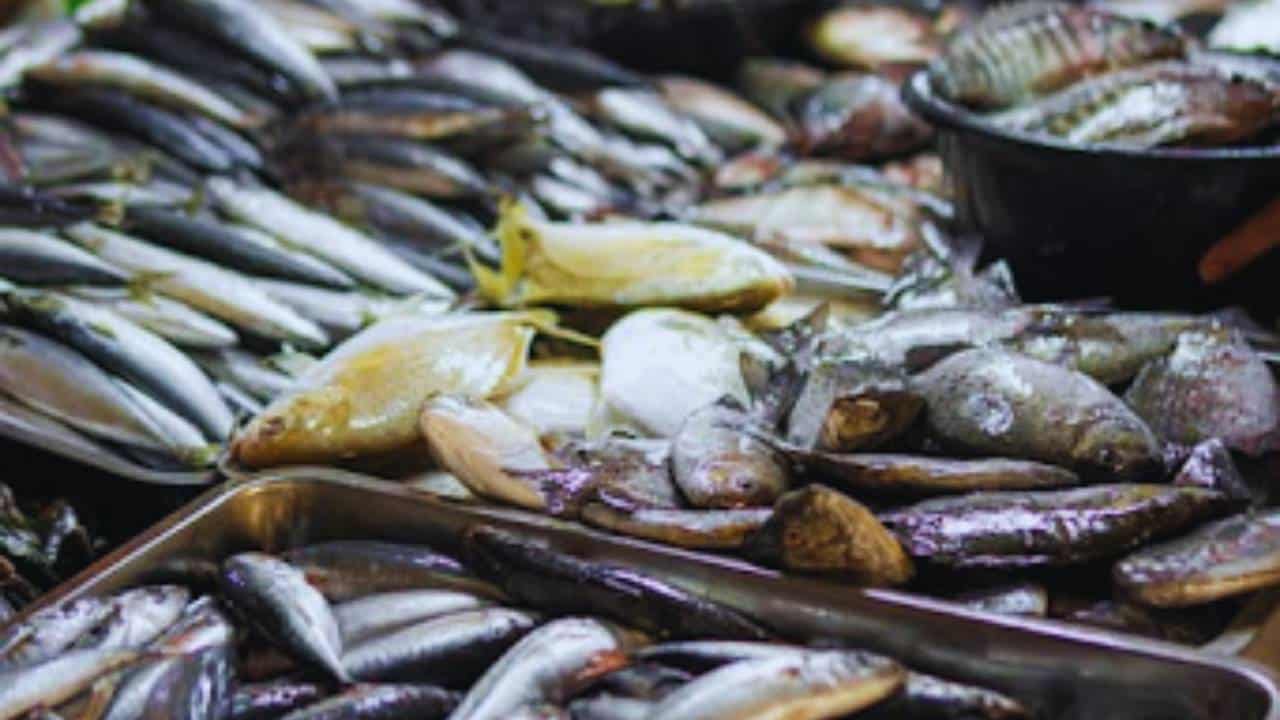Eating protein-rich foods can help you lose weight. These foods make you feel full and satisfied. They also support muscle growth and boost your metabolism.
Dietitians recommend specific high-protein foods for weight loss. These foods are not only high in protein but also offer other health benefits. They can be easily added to your meals and snacks.
You’ll find options for all eating styles, including plant-based diets.
1. Greek Yogurt
Greek yogurt is a powerhouse for weight loss. It’s packed with protein, which helps you feel full and satisfied.
A single serving of Greek yogurt can contain up to 20 grams of protein. This is more than three times the amount in a regular egg.
You’ll find Greek yogurt in many flavors. It’s best to pick plain varieties to avoid added sugars. You can add your own fresh fruits for natural sweetness.
Greek yogurt is also rich in calcium. This mineral supports bone health and may aid in fat burning. Try using Greek yogurt as a substitute for sour cream or mayonnaise. It works well in dips, dressings, and as a topping for baked potatoes.
For breakfast, mix Greek yogurt with berries and a sprinkle of nuts. This combo gives you protein, fiber, and healthy fats to start your day.
Greek yogurt makes a great post-workout snack too. Its protein helps repair and build muscle after exercise.
When shopping, look for brands with live cultures. These probiotics support gut health, which can impact weight loss.
Remember to check the label for added sugars. Some flavored Greek yogurts can be high in calories. Stick to plain versions for the best results.
2. Chicken Breast
Chicken breast is a top choice for weight loss. It’s packed with protein and low in fat. A 3-ounce serving gives you about 26 grams of protein.
This lean meat helps you feel full for longer. You’ll eat less throughout the day. Chicken breast is also very versatile. You can grill, bake, or stir-fry it.
Try adding chicken breast to salads or wraps. It’s great in soups too. For a quick meal, cook extra and keep it in the fridge. You can easily add it to meals later.
Remember to remove the skin before eating. The skin adds extra fat and calories. Stick to healthy cooking methods like grilling or baking. Avoid frying to keep the calories down.
Chicken breast is easy to find and often affordable. It’s a smart pick for your weight loss plan. Add it to your grocery list and enjoy its benefits.
3. Tofu
Tofu is a top pick for weight loss. It’s packed with protein but low in calories. This soy-based food is versatile and easy to use in many dishes.
You can add tofu to stir-fries, salads, or soups. It takes on the flavors of other ingredients well. This makes it a great meat substitute for vegetarians and vegans.
Tofu comes in different textures. Firm tofu is good for grilling or baking. Soft tofu works well in smoothies or desserts. You can even scramble it like eggs for breakfast.
One half-cup of tofu has about 10 grams of protein. It’s also rich in calcium and iron. These nutrients help keep you full and support your body during weight loss.
Try marinating tofu before cooking to boost its flavor. You can also crumble it into dishes for added protein. Tofu is a budget-friendly option that’s easy to find in most grocery stores.
4. Lentils
Lentils are a powerhouse of nutrition for weight loss. These tiny legumes pack a big protein punch. A cup of cooked lentils gives you about 18 grams of protein.
Lentils are also rich in fiber. This combo of protein and fiber helps you feel full longer. When you feel satisfied, you’re less likely to snack on unhealthy foods.
There are many types of lentils to choose from. Green and brown lentils hold their shape well in cooking. Red lentils cook quickly and are great for soups.
You can add lentils to salads, soups, or stews. They also make a tasty side dish. Try swapping meat for lentils in your favorite recipes for a plant-based protein boost.
Lentils are cheap and easy to store. Keep dried lentils in your pantry for quick meals. You can also buy canned lentils for even faster prep.
Remember to rinse dried lentils before cooking. This removes any dirt or debris. Lentils don’t need soaking like other beans do.
For a simple lentil dish, try this. Cook lentils with some veggie broth and spices. Add your favorite vegetables near the end of cooking. You’ll have a filling, protein-rich meal in no time.
5. Quinoa
Quinoa is a powerhouse grain for weight loss. It’s packed with protein, making it a great choice for your diet.
One cup of cooked quinoa gives you about 8 grams of protein. This helps you feel full and satisfied after meals.
Quinoa also has fiber, which aids digestion and keeps you feeling full longer. This can help you eat less throughout the day.
You can use quinoa in place of rice or pasta in many dishes. It’s easy to cook and has a mild, nutty flavor that goes well with lots of foods.
Try adding quinoa to salads or using it as a base for grain bowls. You can even have it for breakfast, mixed with fruit and nuts.
Quinoa is gluten-free, so it’s a good option if you avoid gluten. It’s also a complete protein, meaning it has all nine essential amino acids your body needs.
When buying quinoa, look for whole grain versions. These have more nutrients than processed varieties.
6. Almonds
Almonds are a great snack for weight loss. They pack a lot of protein in a small package. Just a handful gives you a good boost of energy.
You might wonder how nuts can help you lose weight. Almonds are special because they have fiber and healthy fats. These keep you feeling full for longer.
Eating almonds can help control your appetite. You’ll be less likely to reach for unhealthy snacks between meals. This can lead to fewer calories eaten overall.
Almonds also have vitamin E and magnesium. These nutrients are good for your body in many ways. They can help keep your skin healthy and your bones strong.
Try adding almonds to your diet in different ways. Sprinkle them on salads or yogurt. You can also use almond butter on whole-grain toast for breakfast.
Remember to watch your portions. Almonds are high in calories, so stick to a small handful per day. This way, you get the benefits without overdoing it.
7. Cottage Cheese
Cottage cheese is a great high-protein food for weight loss. It’s packed with nutrients and low in calories.
A cup of low-fat cottage cheese has about 24 grams of protein. That’s a lot of protein in just one serving. This makes you feel full for longer.
Cottage cheese is versatile. You can eat it plain or add it to other foods. Try mixing it with fruit for a tasty snack. Or use it as a dip for vegetables.
It’s also rich in calcium. This helps keep your bones strong. Cottage cheese has B vitamins too. These are good for your energy levels.
You can find cottage cheese easily in most stores. Look for low-fat options to keep calories down. Some brands add extra protein or probiotics.
Try cottage cheese as a late-night snack. It might help your muscles recover while you sleep. You can also use it in cooking to boost the protein in your meals.
8. Edamame
Edamame is a powerhouse food for weight loss. These young soybeans are packed with protein and fiber. You’ll get about 8 grams of protein in just a half-cup serving.
Eating edamame can help you feel full and satisfied. This may lead to eating less overall. The protein in edamame also helps build and maintain muscle mass.
Edamame is low in calories but high in nutrients. It contains vitamins and minerals your body needs. You can easily add edamame to salads, stir-fries, or eat it as a snack.
Try steaming edamame and sprinkling it with sea salt. You can also buy it frozen and heat it up quickly. It’s a simple way to boost your protein intake and support your weight loss goals.
Remember to choose whole edamame pods or shell beans. Avoid options with added salt or flavors. This way, you get all the natural benefits without extra calories or sodium.
9. Sardines
Sardines pack a protein punch for weight loss. These small fish offer about 23 grams of protein per 3-ounce serving. That’s more than many other fish options.
Sardines are also rich in omega-3 fatty acids. These healthy fats can help you feel full and satisfied. They may even boost your metabolism.
You can easily add sardines to your diet. Try them on crackers or mixed into salads. They come canned and ready to eat, making them a quick and convenient option.
Sardines are low in mercury compared to larger fish. This makes them a safer choice for regular consumption. They’re also budget-friendly, so you can stock up without breaking the bank.
Remember to choose sardines packed in water or olive oil for the healthiest option. Avoid those in unhealthy oils or high-sodium sauces. With sardines, you get a lot of nutritional bang for your buck.
10. Eggs
Eggs are a top choice for weight loss. They’re packed with protein and other nutrients. One large egg has about 6 grams of protein.
Eggs can help you feel full. This may lead to eating less throughout the day. They’re also low in calories, with about 70 calories per large egg.
You can prepare eggs in many ways. Try them boiled, scrambled, or in an omelet. Add veggies to your egg dishes for extra nutrients and fiber.
Eggs contain important vitamins and minerals. These include vitamin D, B vitamins, and selenium. They also have choline, which is good for brain health.
For the most health benefits, eat the whole egg. The yolk has many nutrients. If you’re watching cholesterol, talk to your doctor about how many eggs to eat.
Eggs are versatile and easy to add to your diet. You can have them for breakfast, lunch, or dinner. They also work well as a snack.
Try hard-boiled eggs for a quick protein boost. Keep a few in your fridge for easy access. You can add them to salads or eat them on their own.
Benefits of High-Protein Foods for Weight Loss
Eating more protein can help you lose weight in several ways. It affects your body and appetite to make weight loss easier and more sustainable.
Increased Satiety
Protein keeps you feeling full longer than carbs or fat. When you eat protein-rich foods, your body releases hormones that signal fullness. This helps you naturally eat less without feeling hungry.
Protein takes more time to digest, so it stays in your stomach longer. You’ll feel satisfied for hours after a high-protein meal. This makes it easier to stick to your diet and avoid snacking.
Studies show that high-protein diets lead to less hunger and fewer calories eaten overall. You may find yourself naturally eating 200-400 fewer calories per day just by adding more protein.
Muscle Preservation
Protein helps you keep muscle while losing fat. Your body normally breaks down some muscle when you diet. But eating enough protein prevents this muscle loss.
Keeping your muscle is key for long-term weight loss success. Muscle burns more calories than fat, even when you’re resting. The more muscle you have, the higher your metabolism.
Protein also helps you build new muscle if you exercise. More muscle means you’ll burn more calories all day long. This makes it easier to keep the weight off for good.
Thermic Effect of Food
Your body burns calories to digest and use the food you eat. This is called the thermic effect of food. Protein has a much higher thermic effect than carbs or fat.
You burn about 20-30% of protein’s calories during digestion. For carbs, it’s only 5-10%. Fat has the lowest thermic effect at 0-3%.
This means eating more protein naturally boosts your metabolism. Your body burns more calories processing protein-rich foods. Over time, this can add up to significant extra calorie burn and weight loss.
How Much Protein Do You Need?
Eating the right amount of protein helps with weight loss and muscle health. Your protein needs depend on your body and activity level.
Recommended Protein Intake
The general rule is to eat 0.8 grams of protein per kilogram of body weight daily. For a 150-pound person, that’s about 54 grams of protein.
But this is just a starting point. Many experts say you need more, especially if you’re trying to lose weight or build muscle. Some suggest 1.2 to 2.0 grams per kilogram of body weight.
Here’s a simple way to estimate your needs:
- Multiply your weight in pounds by 0.36 to get grams of protein per day
- Example: 150 lbs x 0.36 = 54 grams of protein daily
Factors Affecting Protein Needs
Your protein needs can change based on:
- Activity level: If you exercise a lot, you need more protein.
- Age: Older adults often need more protein to keep muscle mass.
- Health status: Some health issues may increase your protein needs.
- Pregnancy: Expecting moms need extra protein for the baby’s growth.
It’s best to spread your protein intake throughout the day. Aim for 20-30 grams of protein at each meal. This helps your body use protein more effectively for muscle building and repair.
Tips for Incorporating High-Protein Foods Into Your Diet
Adding more protein to your meals can boost weight loss and improve overall health. Here are some practical ways to increase your protein intake throughout the day.
Meal Planning Strategies
Plan your meals ahead of time to make sure you’re getting enough protein. Start by choosing a protein source for each meal. Good options include chicken, fish, lean beef, eggs, or tofu. Aim for about 20-30 grams of protein per meal.
Try batch cooking on weekends. Make a big pot of chili or soup with beans and meat. Grill extra chicken breasts to use in salads or sandwiches. Hard-boil a dozen eggs for quick snacks or breakfasts.
Use a food tracking app to monitor your protein intake. This can help you see where you might need to add more protein-rich foods to your diet.
High-Protein Snacks
Keep protein-packed snacks on hand for when hunger strikes. Some easy options are:
- Greek yogurt with berries
- Apple slices with peanut butter
- String cheese and whole grain crackers
- Hummus with carrot sticks
- Handful of almonds or other nuts
Make your own trail mix with nuts, seeds, and a small amount of dried fruit. This gives you a good mix of protein and healthy fats.
Try protein smoothies made with milk or plant-based protein powder. Add spinach or kale for extra nutrients without changing the taste.
Balancing Macronutrients
While protein is important, don’t forget about carbs and fats. Aim for a balanced plate at each meal. Fill half your plate with veggies, a quarter with lean protein, and a quarter with whole grains or starchy veggies.
Add protein to foods you already eat. Sprinkle nuts or seeds on your morning oatmeal. Mix Greek yogurt into your mashed potatoes. Top your salad with grilled chicken or canned tuna.
Don’t shy away from plant-based proteins. Beans, lentils, and quinoa are all great sources of protein and fiber. They can be easily added to soups, salads, and grain bowls.
Final Thoughts
Incorporating high-protein foods into your diet can be a game-changer for weight loss. These nutrient-dense options not only help you feel full and satisfied, but they also support muscle health and boost metabolism.
From Greek yogurt to eggs, and from plant-based options like tofu to lean meats like chicken breast, there’s a protein-rich food for every preference and dietary need.
Start small by incorporating one or two of these foods into your daily meals, and gradually increase your protein intake as you become more comfortable.
Lastly, while diet plays a crucial role in weight loss, don’t forget the importance of regular physical activity and adequate sleep. Combined with a protein-rich diet, these lifestyle factors can help you achieve and maintain a healthy weight for years to come.










































